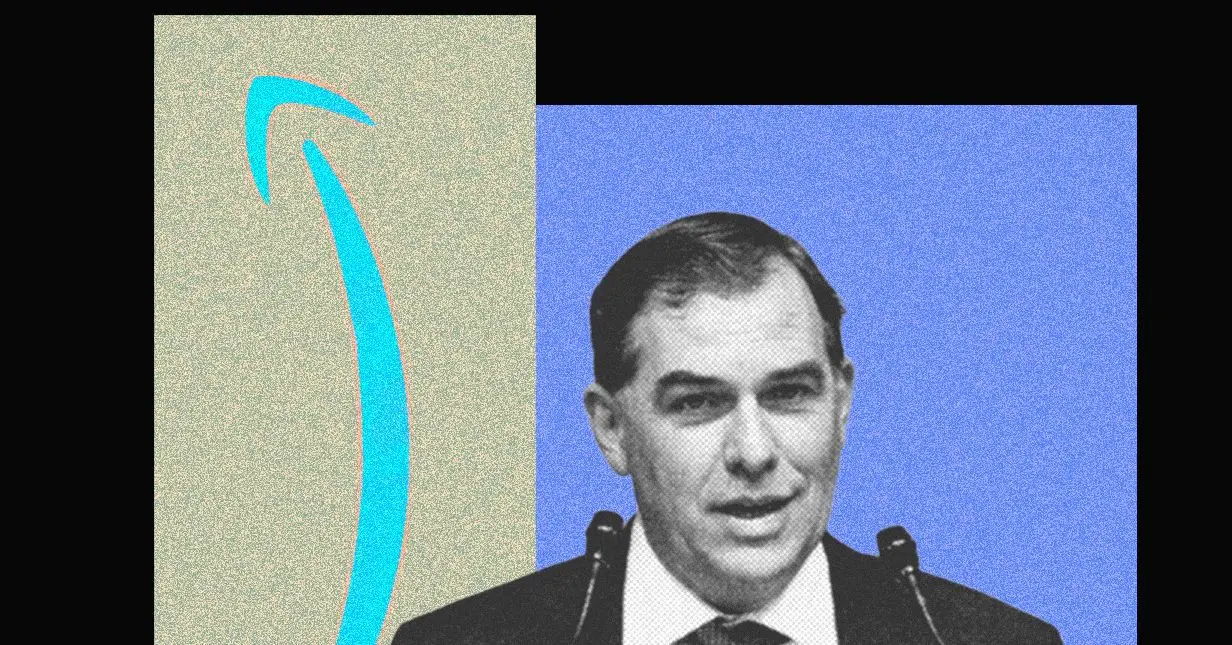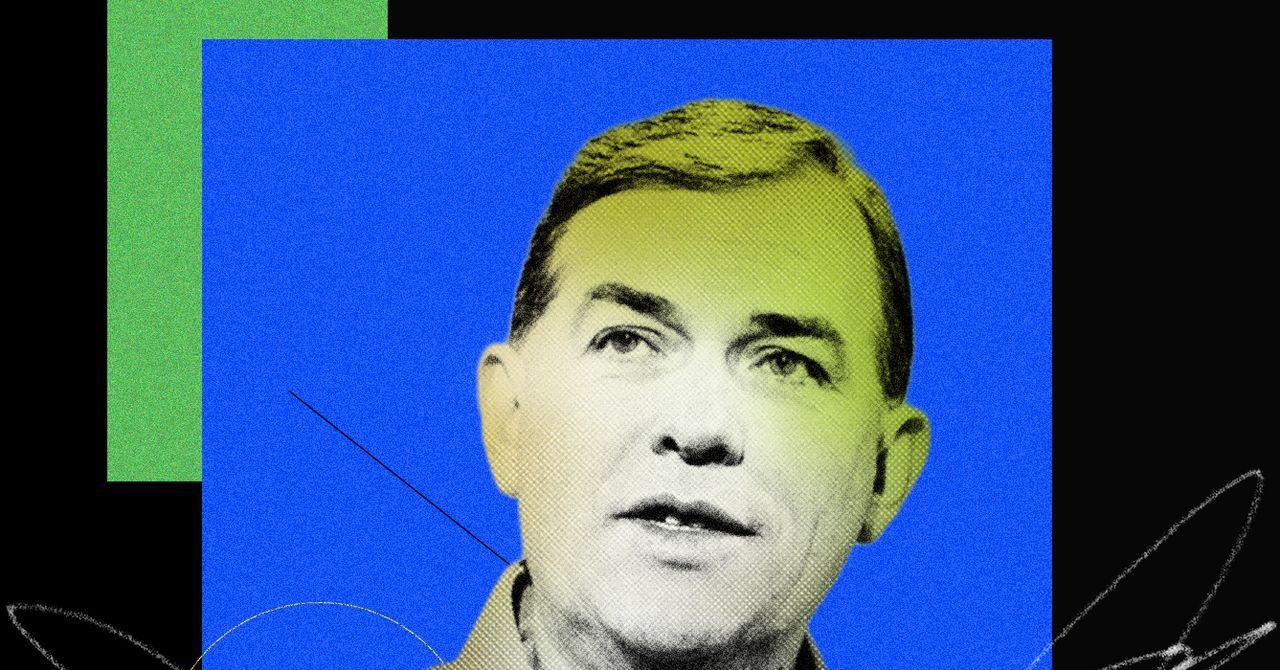AWS CEO Matt Garman Emphasizes Continuity and AI Integration Amid Return-to-Office Push
2 Sources
2 Sources
[1]
AWS CEO Matt Garman seeks little change, pushes for return to office
The new head of Amazon's cloud-computing division Matt Garman hopes to keep a lot of things at the company the same. "The business is doing well...There's not a desire to massively change anything," Garman said in an interview with The Seattle Times last week, five months after he took the reins at Amazon Web Services, one of the tech and e-commerce giant's most lucrative business divisions. AWS is doing well. Amazon still dominates the cloud-computing industry by a wide margin, cost-optimization trends that led to customers spending less on computing services seem to have eased and the business unit reported more than $51 billion in revenue in the first half of this year, compared to $43.5 billion in the same time period last year. But, Garman took over at a time when Amazon as a whole is changing. The growth of generative artificial intelligence, which exploded into mainstream consciousness two years ago with the launch of OpenAI's ChatGPT, changed the types of applications tech companies are developing and introduced new possibilities for businesses and consumers. It also spurred a new chapter for AWS, which some industry insiders saw as lagging behind its rivals in the AI space. At the same time, Amazon has undergone two years of cost-cutting efforts, scaling back experimental projects and headcount, after years of rapid growth. CEO Andy Jassy told employees in September Amazon would return to pre-pandemic office norms and work to "flatten" the company and reduce bureaucracy. It's gearing up to enforce a five-day-a-week office mandate in January and start a restructuring of the company next year that will lead to fewer managers in an effort to help employees get closer to the customer. Amazon asked each team to increase the ratio of individual contributors to managers by 15%. Garman said Friday the change did not mean layoffs at AWS. "That's not the plan," he said, adding that it's more about organizational design. "The people who we want at Amazon, who do well at Amazon, don't want there to be a giant hierarchy. They don't want to be very far from customers." Garman recently came under fire when he told AWS employees at a town hall meeting that there were "other companies out there" if they didn't want to comply with the five-day-a-week office mandate. He doubled down on that Friday. Working together in the office, "that's how we work best," Garman said. "It's OK that's not how everyone thinks that's how they want to work...You can choose to go work for another company...Employees get to make the call." "It won't be perfect for everybody. I'm sure there'll be a handful or some number of people that opt out," he continued. Garman has been with AWS since it got off the ground in 2006. He started as an intern a year earlier and then was hired as the first AWS product manager, where he worked on pricing plans, product names and product detail pages. He took over as head of AWS in June, the third AWS CEO in the division's 18-year history. He was reportedly seen as a front-runner for the top job in 2021, when Jassy moved from CEO of AWS to CEO of all of Amazon. Instead, the role went to Adam Selipsky, the former CEO of Tableau and another Amazon veteran. Selipsky left AWS in June to spend more time with family, "recharge" and reflect on his next steps, he said at the time. Garman said Friday that he has the same leadership philosophy as his predecessors. Selipsky was his hiring manager. Jassy was the one who enticed him to sign up for the AWS internship in the first place. "I think a lot of us think about the problems the same," Garman said. He recalled a conversation with Amazon founder and former CEO Jeff Bezos, where Bezos said: "It's easy to think about all the things that have changed, the most important part is to think about the things that haven't changed, or probably won't change. That's how you build durable business strategies." For AWS, that means sticking to its foundational hypothesis that building cloud computing services with the best security and operational excellence will build customer trust and a sustainable business. Now, Garman is taking the same approach to AI, the latest tech frontier. Garman doesn't see AI as a "something that's off to the side" of AWS. "It's not a different business. It's something that's really integrated into the business." Mark Mahaney, senior managing director for investment banking firm Evercore ISI, said it's too early to gauge how Garman's tenure as head of AWS has gone. But, he considered it a good sign that "one AWS vet was replaced by another." Now, Garman's job is two-fold, Mahaney continued. "He needs to convince people that the core AWS business is recovering," and that AWS is able to tap into the "really massive investment and product cycle around AI." "Amazon needs to prove...that it's got a solution for this new focus, that its revenue growth should benefit from this," Mahaney said. "Generative AI should accelerate the shift of data, of processes into the cloud, of workloads into the cloud...And if it doesn't, then it raises the question of 'Has Amazon been missing this tech shift?'" When we look back in a few years on how the shift to AI changed the tech industry, Mahaney said he doesn't expect to see a material shift away from AWS. "But, right now, it's still a guess," he said. Garman said Friday he often gets asked whether he feels AWS has lagged behind after the release of ChatGPT. His answer is always no. Garman, and those with their pulse on the tech industry, knew that something like ChatGPT would be coming, he said. So, Amazon started preparing its response six to12 months before it came out. It wanted to help customers who didn't know how to use the tech and to provide the other infrastructure they'd need to be successful with it, like data storage and security. "A lot of customers went and ran like 100 different proofs of concept. Now what they're doing is they're saying, 'OK a bunch of these, two or three or five are actually delivering real value for me,'" Garman said. "Now I have to think about rolling those one through five (proof of concepts) into actual production." That's where AWS comes in, Garman said. "I need a platform that I can build on that's super secure, that takes advantage of all my data today," he continued. "We're finding customers come to us and say, 'actually now I need to build this in AWS.'"
[2]
AWS CEO Matt Garman seeks little change, pushes for return to office
By Lauren Rosenblatt, The Seattle Times The Tribune Content Agency The new head of Amazon's cloud-computing division Matt Garman hopes to keep a lot of things at the company the same. "The business is doing well...There's not a desire to massively change anything," Garman said in an interview with The Seattle Times last week, five months after he took the reins at Amazon Web Services, one of the tech and e-commerce giant's most lucrative business divisions. AWS is doing well. Amazon still dominates the cloud-computing industry by a wide margin, cost-optimization trends that led to customers spending less on computing services seem to have eased and the business unit reported more than $51 billion in revenue in the first half of this year, compared to $43.5 billion in the same time period last year. But, Garman took over at a time when Amazon as a whole is changing. The growth of generative artificial intelligence, which exploded into mainstream consciousness two years ago with the launch of OpenAI's ChatGPT, changed the types of applications tech companies are developing and introduced new possibilities for businesses and consumers. It also spurred a new chapter for AWS, which some industry insiders saw as lagging behind its rivals in the AI space. At the same time, Amazon has undergone two years of cost-cutting efforts, scaling back experimental projects and headcount, after years of rapid growth. CEO Andy Jassy told employees in September Amazon would return to pre-pandemic office norms and work to "flatten" the company and reduce bureaucracy. It's gearing up to enforce a five-day-a-week office mandate in January and start a restructuring of the company next year that will lead to fewer managers in an effort to help employees get closer to the customer. Amazon asked each team to increase the ratio of individual contributors to managers by 15%. Garman said Friday the change did not mean layoffs at AWS. "That's not the plan," he said, adding that it's more about organizational design. "The people who we want at Amazon, who do well at Amazon, don't want there to be a giant hierarchy. They don't want to be very far from customers." Garman recently came under fire when he told AWS employees at a town hall meeting that there were "other companies out there" if they didn't want to comply with the five-day-a-week office mandate. He doubled down on that Friday. Working together in the office, "that's how we work best," Garman said. "It's OK that's not how everyone thinks that's how they want to work...You can choose to go work for another company...Employees get to make the call." "It won't be perfect for everybody. I'm sure there'll be a handful or some number of people that opt out," he continued. Garman has been with AWS since it got off the ground in 2006. He started as an intern a year earlier and then was hired as the first AWS product manager, where he worked on pricing plans, product names and product detail pages. He took over as head of AWS in June, the third AWS CEO in the division's 18-year history. He was reportedly seen as a front-runner for the top job in 2021, when Jassy moved from CEO of AWS to CEO of all of Amazon. Instead, the role went to Adam Selipsky, the former CEO of Tableau and another Amazon veteran. Selipsky left AWS in June to spend more time with family, "recharge" and reflect on his next steps, he said at the time. Garman said Friday that he has the same leadership philosophy as his predecessors. Selipsky was his hiring manager. Jassy was the one who enticed him to sign up for the AWS internship in the first place. "I think a lot of us think about the problems the same," Garman said. He recalled a conversation with Amazon founder and former CEO Jeff Bezos, where Bezos said: "It's easy to think about all the things that have changed, the most important part is to think about the things that haven't changed, or probably won't change. That's how you build durable business strategies." For AWS, that means sticking to its foundational hypothesis that building cloud computing services with the best security and operational excellence will build customer trust and a sustainable business. Now, Garman is taking the same approach to AI, the latest tech frontier. Garman doesn't see AI as a "something that's off to the side" of AWS. "It's not a different business. It's something that's really integrated into the business." Mark Mahaney, senior managing director for investment banking firm Evercore ISI, said it's too early to gauge how Garman's tenure as head of AWS has gone. But, he considered it a good sign that "one AWS vet was replaced by another." Now, Garman's job is two-fold, Mahaney continued. "He needs to convince people that the core AWS business is recovering," and that AWS is able to tap into the "really massive investment and product cycle around AI." "Amazon needs to prove...that it's got a solution for this new focus, that its revenue growth should benefit from this," Mahaney said. "Generative AI should accelerate the shift of data, of processes into the cloud, of workloads into the cloud...And if it doesn't, then it raises the question of 'Has Amazon been missing this tech shift?'" When we look back in a few years on how the shift to AI changed the tech industry, Mahaney said he doesn't expect to see a material shift away from AWS. "But, right now, it's still a guess," he said. Garman said Friday he often gets asked whether he feels AWS has lagged behind after the release of ChatGPT. His answer is always no. Garman, and those with their pulse on the tech industry, knew that something like ChatGPT would be coming, he said. So, Amazon started preparing its response six to12 months before it came out. It wanted to help customers who didn't know how to use the tech and to provide the other infrastructure they'd need to be successful with it, like data storage and security. "A lot of customers went and ran like 100 different proofs of concept. Now what they're doing is they're saying, 'OK a bunch of these, two or three or five are actually delivering real value for me,'" Garman said. "Now I have to think about rolling those one through five (proof of concepts) into actual production." That's where AWS comes in, Garman said. "I need a platform that I can build on that's super secure, that takes advantage of all my data today," he continued. "We're finding customers come to us and say, 'actually now I need to build this in AWS.'"
Share
Share
Copy Link
Matt Garman, the new CEO of Amazon Web Services (AWS), discusses his leadership approach, the company's stance on AI, and the controversial return-to-office mandate, while highlighting AWS's strong market position and future strategies.

New AWS CEO Emphasizes Continuity and Growth
Matt Garman, the newly appointed CEO of Amazon Web Services (AWS), has outlined his vision for the cloud computing giant, emphasizing continuity and growth in a recent interview with The Seattle Times
1
2
. Five months into his tenure, Garman expressed satisfaction with the company's performance, stating, "The business is doing well...not a desire to massively change anything."Strong Financial Performance
AWS continues to dominate the cloud computing industry, reporting impressive financial results. In the first half of this year, the division generated over $51 billion in revenue, a significant increase from $43 billion in the same period last year
1
2
. This growth comes despite previous cost-optimization trends that had led to reduced customer spending on computing services.Navigating the AI Landscape
Garman addressed concerns about AWS's position in the rapidly evolving artificial intelligence (AI) sector. He refuted claims that AWS has lagged behind competitors, particularly in response to the launch of OpenAI's ChatGPT. Garman revealed that Amazon had been preparing for such advancements "six to 12 months before it came out"
1
2
.AI Integration Strategy
The AWS CEO emphasized that AI is not viewed as a separate entity within the company but as an integral part of their business strategy. "It's not a different business. It's something that's really integrated into the business," Garman explained
1
2
. This approach aligns with AWS's foundational principle of building cloud computing services with top-notch security and operational excellence to foster customer trust and sustainable growth.Return-to-Office Mandate and Organizational Changes
Garman has been at the center of controversy regarding Amazon's return-to-office policy. He defended the company's decision to enforce a five-day-a-week office mandate starting January, stating, "Working together in the office, that's how we work best"
1
2
. This stance has faced criticism from employees, with Garman acknowledging that some may choose to leave the company as a result.Related Stories
Organizational Restructuring
In line with Amazon's broader initiatives, AWS is participating in efforts to "flatten" the company structure and reduce bureaucracy. Garman clarified that these changes, which aim to increase the ratio of individual contributors to managers by 15%, are not intended to result in layoffs at AWS
1
2
.Leadership Philosophy and Future Outlook
Garman, who has been with AWS since its inception in 2006, emphasized his alignment with the leadership philosophies of his predecessors, including Andy Jassy and Adam Selipsky. He recalled advice from Amazon founder Jeff Bezos about focusing on unchanging aspects of the business to build durable strategies
1
2
.Industry Perspective
Mark Mahaney, senior managing director at Evercore ISI, commented on Garman's challenges, noting that he needs to demonstrate AWS's core business recovery and its ability to capitalize on the AI revolution. Mahaney expressed cautious optimism about AWS's future, stating, "When we look back in a few years on how the shift to AI changed the tech industry, I don't expect to see a material shift away from AWS. But, right now, it's still a guess"
1
2
.References
Summarized by
Navi
[1]
Related Stories
AWS CEO Matt Garman declares AI agents bigger than internet as Amazon stakes claim in AI race
02 Dec 2025•Technology

AWS Faces Growth Challenges Amid AI Boom and Infrastructure Constraints
07 Feb 2025•Business and Economy

AWS Drives Partner Growth with AI Innovation and Enhanced Channel Strategy
03 Dec 2024•Business and Economy

Recent Highlights
1
Google launches Gemini 3 Flash as default AI model, delivering speed with Pro-grade reasoning
Technology

2
OpenAI launches GPT Image 1.5 as AI image generator war with Google intensifies
Technology

3
OpenAI launches ChatGPT app store, opening doors for third-party developers to build AI-powered apps
Technology





